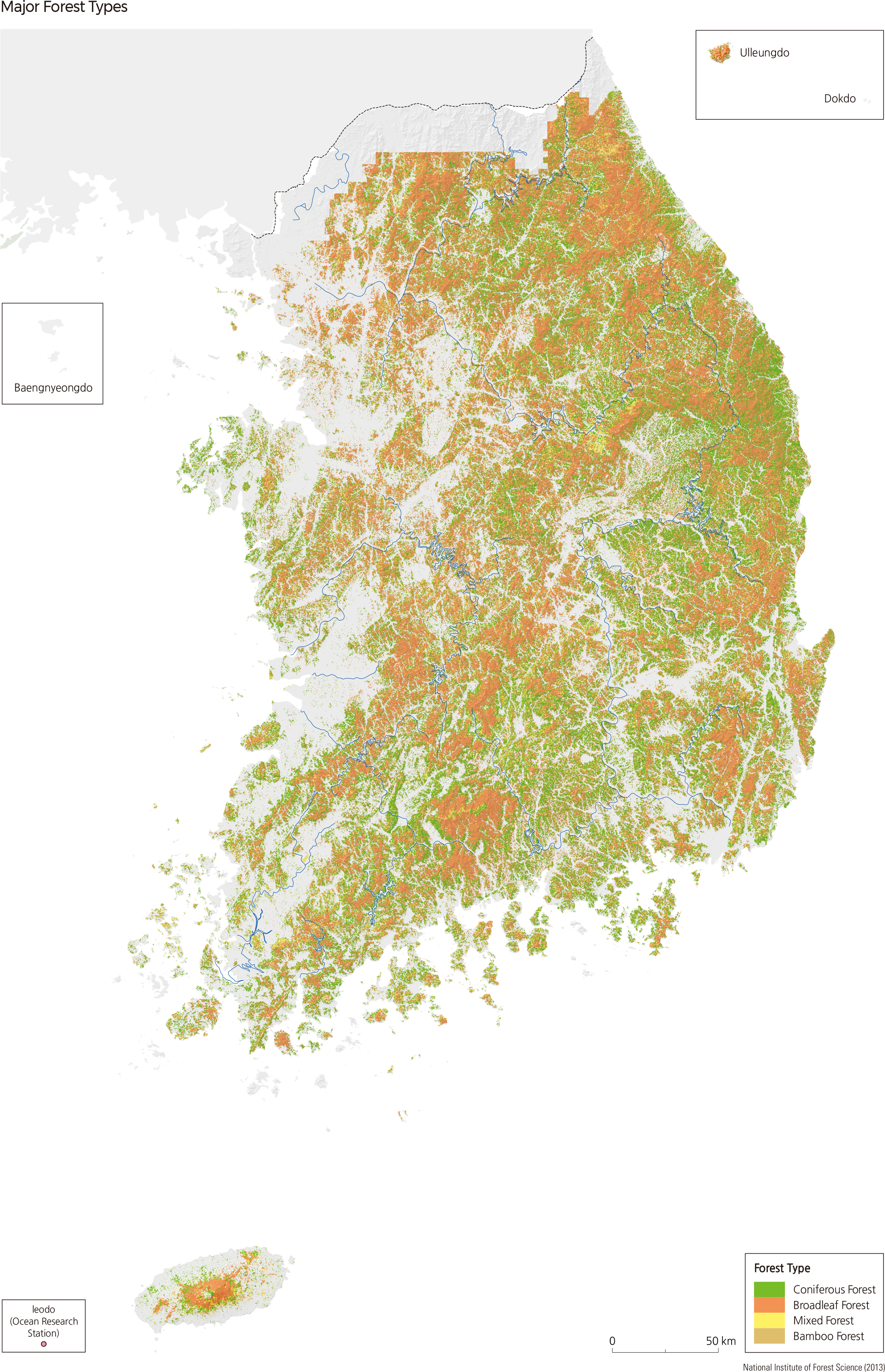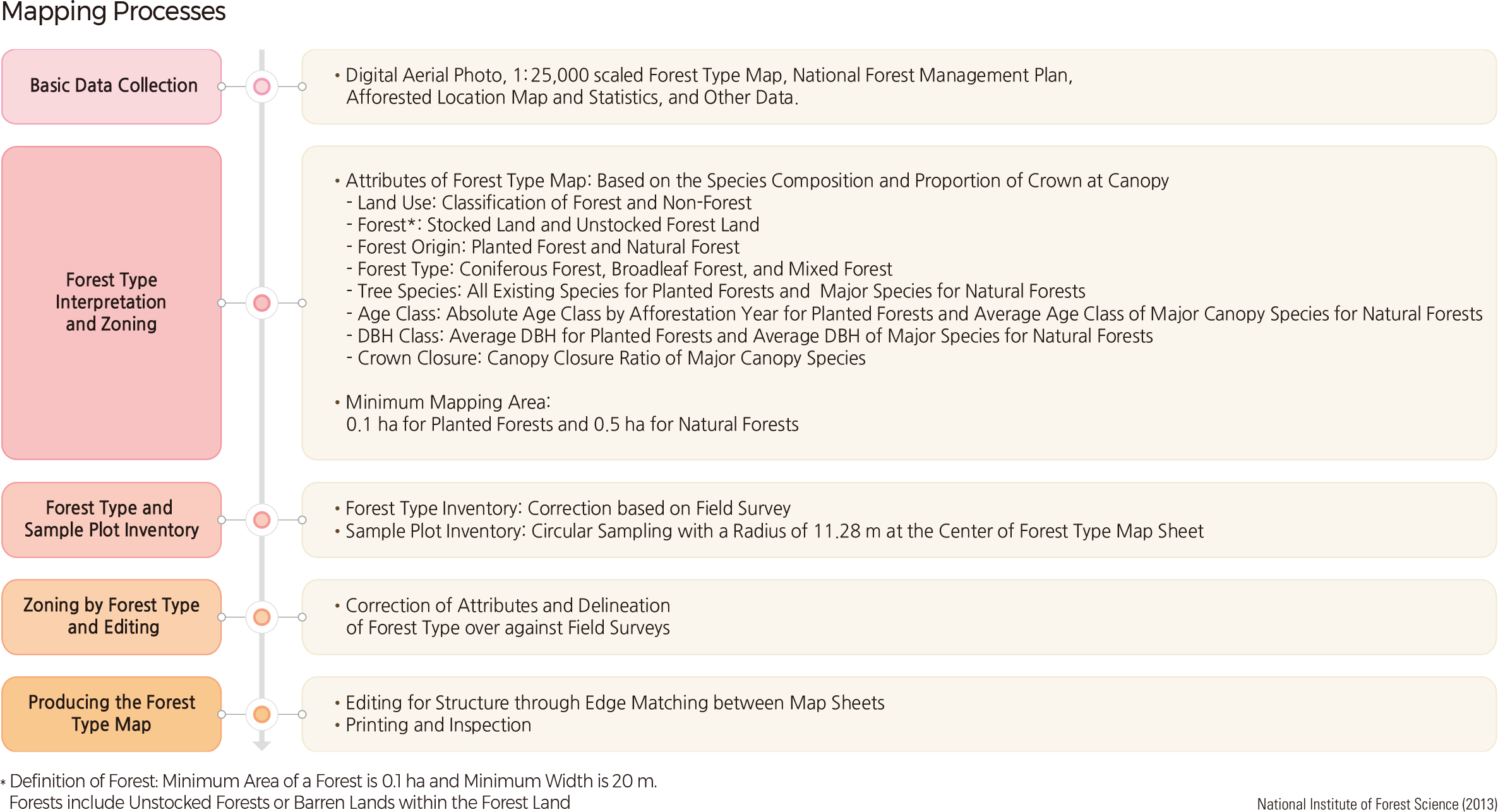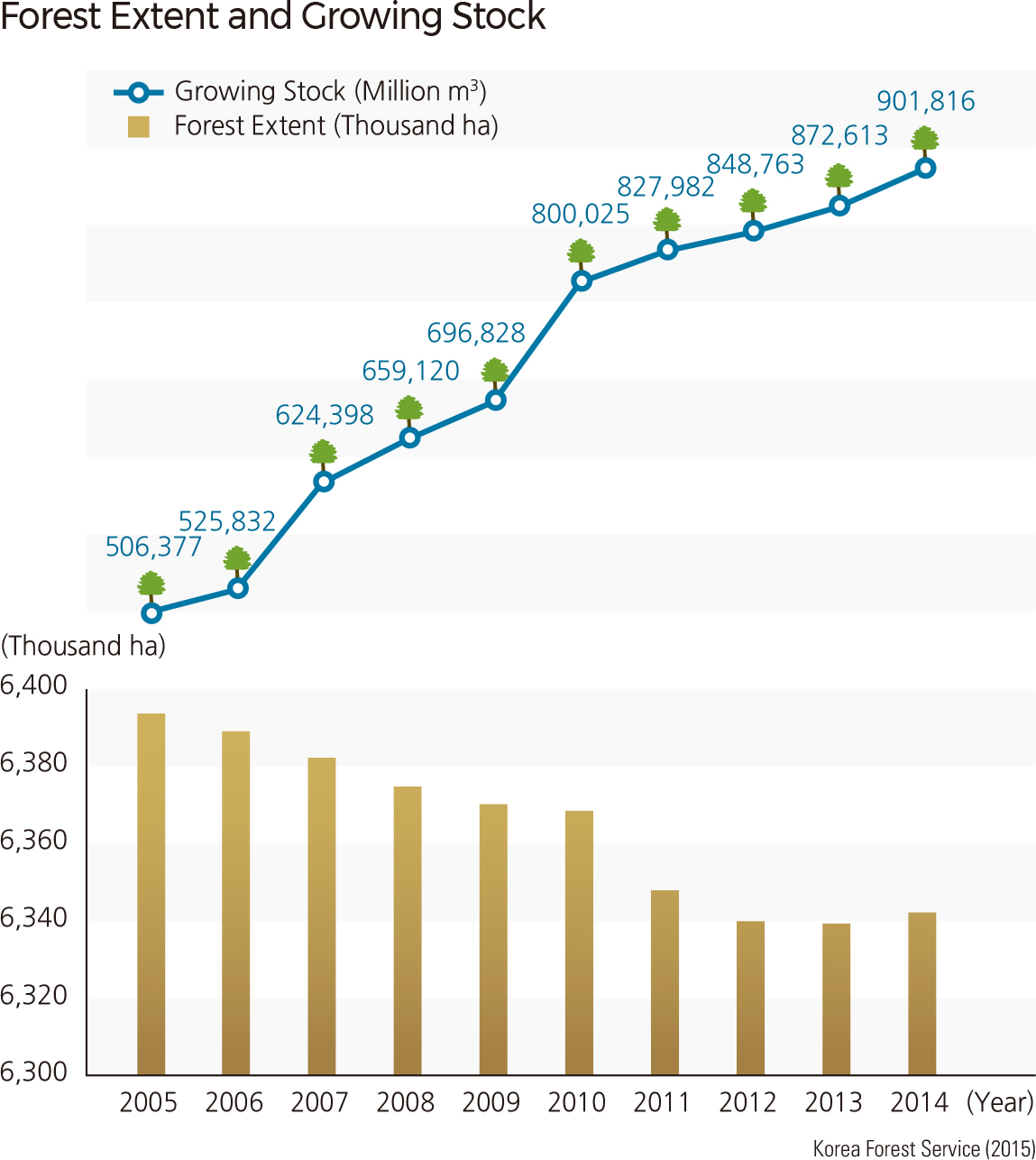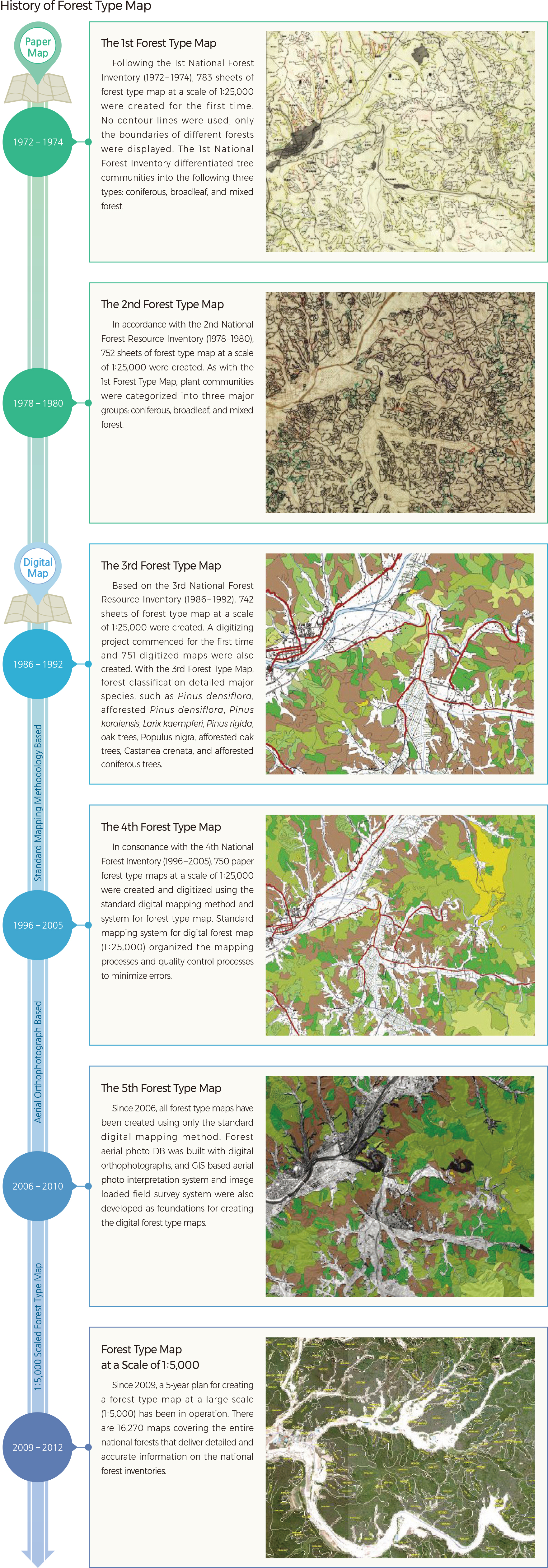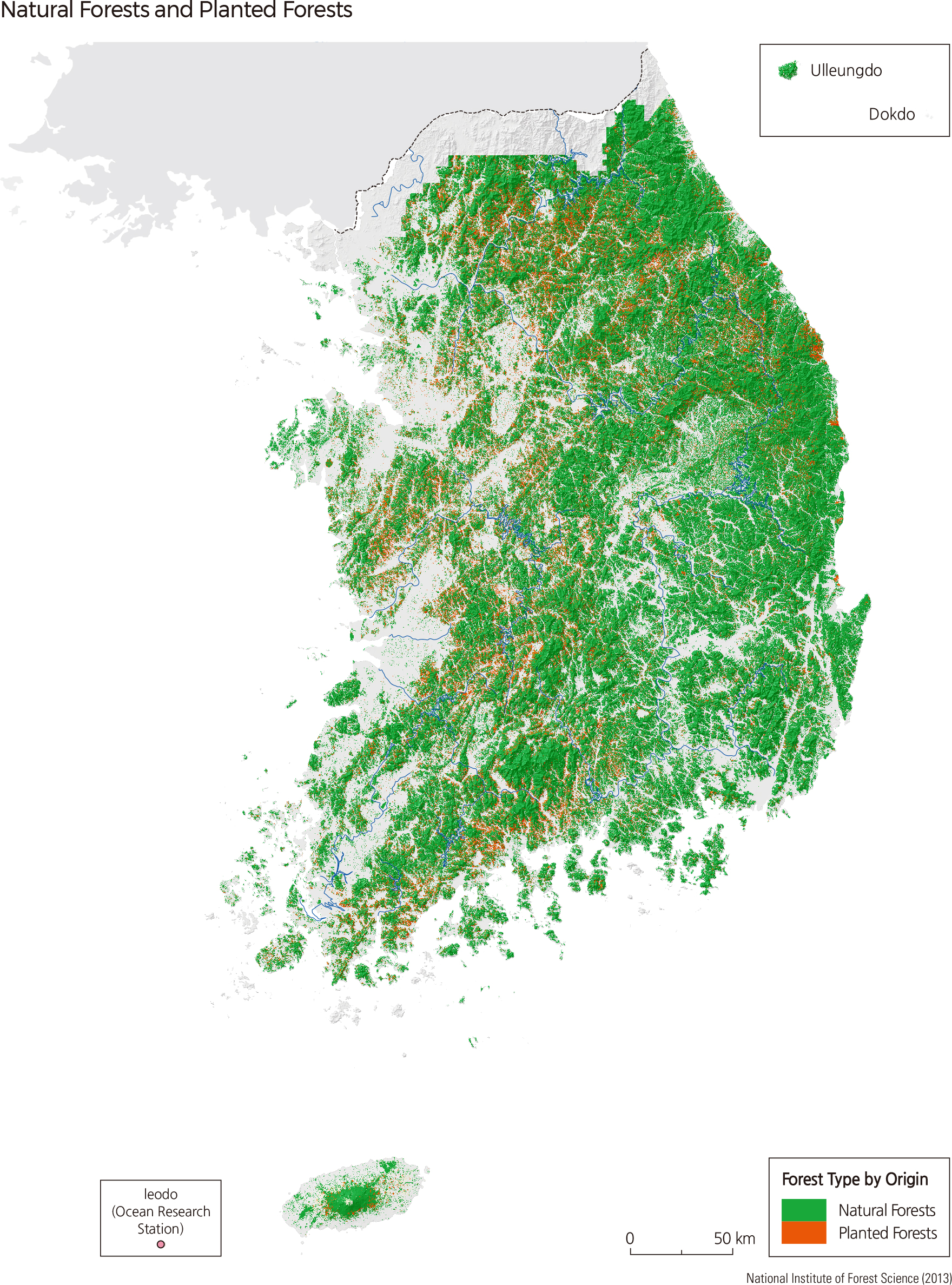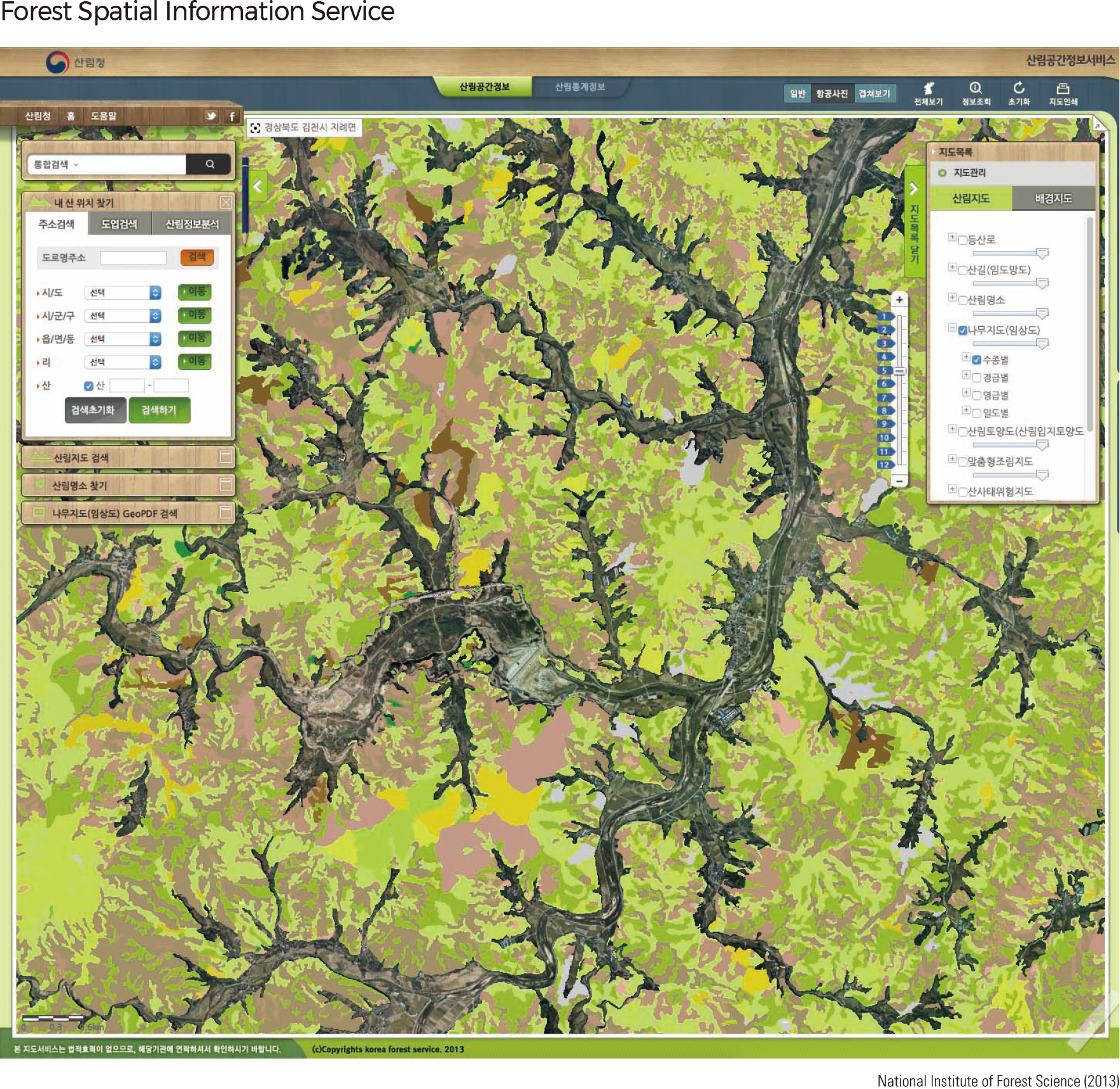English II 2020
Forest type maps show the classification of forests into coniferous forest, broadleaf forest, and mixed forest, according to the species composition of the forest. Bamboo forests are classified into natural forests.
The maps of forest type have been produced at a scale of 1: 25,000 with the National Forest Inventory five times since 1972. Maps started to be digitized from the third edition of the maps of forest type (1986–1992), and the production system was standardized from the fourth edition (1996–2005). More detailed 1: 5,000 scale maps of forest type have been produced since 2009 in connection with the National Spatial Data System project. In 2012, 16,270 sheets of forest type maps of the whole territory were completed.
Coniferous forests are dominant in Gyeongsangbuk-do, while broadleaf forests dominate in Gangwon-do, where broadleaf forests make up 54.9% of the total forest area. This figure shows an increase in the area of coniferous forest (32.4%) compared to the data from the basic forest statistics in 1995. The area of coniferous forests is larger than that of broadleaf forests in Gyeongnam, Jeonnam, Gwangju, Daegu, and Busan. In the rest of the area, broadleaf forests occupy a larger area than coniferous forests.
Forests are divided into artificial forests and natural forests based on their origin. Korea's afforestation policy before 1970 focused on rehabilitating denuded mountainous areas. Large-scale artificial afforestation was conducted through two greening projects, which began in 1973. These projects have restored about 124,000 ha of forest. Through this, Korea has become a global success story for forest restoration.
Most of the artificial forests in the central region of South Korea are dominated by species such as Korean Pine (Pinus koraiensis), Japanese Larch (Larix leptolepis), and Pitch Pine (Pinus rigida). In the southern part of the country, Japanese Cedar (Cryptomeria japonica) and Hinoki Cypress (Chamaecyparis obtusa) imported from Japan are also planted. Artificial forests comprise around 15.5% of the total forest area. Natural forests are established from seeds, sprouts, or root suckers of trees already on or formerly occupying the land. Except for Korean Red Pine (Pinus densiflora), most natural forest areas regenerate naturally by sprouting. Tree species in the natural broadleaf forests are almost mutually exclusive. Generally, species richness per unit area of broadleaf forest is low, but pure stands are rarely formed. In most natural broadleaf forests, the high forest canopy is occupied by oak species, such as Mongolian Oak (Quercus mongolica), Sawtooth Oak (Quercus acutissima), and other types of trees such as Loose-flower Hornbeam (Carpinus laxiflora), Sargent's Cherry (Prunus sargentii), East Asian Ash (Fraxinus rhynchophylla), maples, palmate maple, East Asian white birch, birch trees, Amur Linden (Tilia amurensis), Japanese Elm (Ulmus davidiana), Wedding Cake Tree (Cornus controversa), and Manchurian Walnut (Juglans mandshurica). Underneath the canopy, the sub-tree layer is formed from Heartleaf Hornbeam (Carpinus cordata), Korean Maple (Acer pseudosieboldianum), Fragrant Snowbell (Styrax obassia), and other young arboreal trees.
Over half of Korea's natural forests are comprised of broadleaf trees, while over 80% of artificial forests are comprised of coniferous trees.
As of 2014, Korea's forest area occupied 63.2% of the national land. Korea has the fourth-highest ratio of forest per land area among OECD countries after Finland (72.9%), Sweden (68.7%), and Japan (68.5%). However, the forest area continues to decrease, while the land area continues to increase. |
